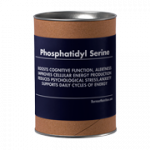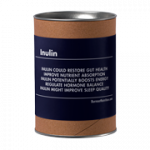The gluten-free casein-free (GFCF) diet eliminates gluten (found in wheat, barley, and rye) and casein (a protein in dairy products). This dietary approach may help manage symptoms of Chronic Fatigue Syndrome/Myalgic Encephalomyelitis (CFS/ME), a complex condition characterized by severe, persistent fatigue and post-exertional malaise.
Potential Benefits of the GFCF Diet for CFS/ME:
- Increased Energy and Reduced Fatigue: Removing gluten and casein can help reduce exhaustion and post-exertion exhaustion.
- Improved Mental Clarity: The diet may alleviate brain fog, memory issues, and difficulty concentrating.
- Better Digestion: Eliminating gluten and casein can provide relief from digestive problems like bloating, gas, and diarrhea.
- Less Inflammation and Pain: The GFCF diet has been shown to reduce overall inflammation levels and associated pain.
- Stronger Immune System: By removing gluten and casein triggers, the immune system may function better.
Following the GFCF Diet:
| Foods to Avoid | Suitable Alternatives |
|---|---|
| Gluten sources: wheat, rye, barley, spelt, kamut, commercial oats | Gluten-free grains: rice, corn, quinoa, amaranth, buckwheat, millet, teff |
| Casein sources: milk, cheese, yogurt, butter, cream, ice cream | Dairy alternatives: plant-based milks, dairy-free cheese, yogurt, butter |
Challenges and Considerations:
- Nutrient gaps: Work with a dietitian to ensure a balanced diet and consider supplements.
- Cross-contamination risks: Use dedicated utensils, cookware, and read labels carefully.
- Dining out and social events: Research restaurants, bring your own dishes, and explain your dietary needs.
- Staying motivated: Focus on potential benefits, find enjoyable GFCF recipes, and build a support network.
Personalizing Your GFCF Diet:
- Determine your tolerance levels for gluten and casein.
- Identify and address other potential food sensitivities.
- Consider combining the GFCF diet with other dietary approaches, such as low-FODMAP or anti-inflammatory diets.
Tracking Progress and Reintroduction:
- Document your symptoms and monitor changes while following the GFCF diet.
- Reintroduce gluten and casein gradually, one at a time, and observe your body’s reactions.
- Manage setbacks by identifying and eliminating trigger foods, seeking professional support, and practicing self-compassion.
While the GFCF diet is not a cure-all, it may be worth exploring as a potential tool for managing CFS/ME symptoms. Work closely with healthcare professionals to implement the diet safely and effectively.
Related video from YouTube
Gluten and Casein Sensitivity
What are Gluten and Casein?
Gluten is a protein found in grains like wheat, rye, and barley. It’s present in many common foods such as bread, pasta, cereals, and baked goods.
Casein is a protein found in dairy products like milk, cheese, yogurt, and butter.
How They Affect the Body
In some people, gluten and casein can cause inflammation and damage to the digestive system. Gluten may lead to increased intestinal permeability (leaky gut), allowing partially digested food particles and toxins to enter the bloodstream. Casein has been linked to digestive issues, immune system reactions, and potential effects on the brain.
Connection to CFS/ME Symptoms
Several studies have found a link between gluten and casein sensitivities and CFS/ME symptoms. These proteins may contribute to:
- Fatigue and post-exertional malaise
- Brain fog and cognitive issues
- Digestive problems like bloating and diarrhea
- Joint and muscle pain
- Headaches and migraines
The inflammatory response triggered by gluten and casein may worsen various CFS/ME symptoms.
Identifying Food Sensitivities
To determine if gluten or casein is contributing to your CFS/ME symptoms, consider:
| Method | Description |
|---|---|
| Food diary | Track your food intake and symptoms to identify potential triggers. |
| Elimination diet | Remove gluten and casein from your diet for a period, then reintroduce them one at a time to observe reactions. |
| Food sensitivity testing | Blood tests can detect antibodies to gluten and casein, indicating sensitivity. |
Working with a healthcare professional or registered dietitian can help identify food sensitivities and develop an appropriate dietary plan.
Benefits of a GFCF Diet for CFS/ME
More Energy, Less Fatigue
Removing gluten and casein from your diet can help reduce fatigue, a key symptom of CFS/ME. These proteins may trigger inflammation and immune reactions that worsen exhaustion. By eliminating them, many people report having more energy and less post-exertion exhaustion.
Clearer Thinking, Less Brain Fog
Gluten and casein sensitivities have been linked to cognitive issues like brain fog, memory problems, and difficulty concentrating. A GFCF diet may improve mental clarity, focus, and thinking ability by reducing inflammation and potential effects on the brain.
Better Digestion
Gluten and casein are common triggers for digestive issues like bloating, gas, diarrhea, and abdominal pain. Eliminating these proteins can provide relief from gastrointestinal symptoms and improve nutrient absorption.
Less Inflammation and Pain
Gluten and casein may cause an inflammatory response in sensitive individuals, leading to joint and muscle pain, headaches, and other discomforts. A GFCF diet has been shown to reduce overall inflammation levels and associated pain.
Stronger Immune System
Chronic inflammation and leaky gut caused by gluten and casein can weaken the immune system. By removing these triggers, the immune system may function better, potentially reducing the frequency and severity of infections and illnesses.
| Benefit | Description |
|---|---|
| More Energy | Eliminating gluten and casein can help reduce fatigue and post-exertion exhaustion. |
| Clearer Thinking | A GFCF diet may improve mental clarity, focus, and cognitive function. |
| Better Digestion | Removing gluten and casein can provide relief from digestive issues like bloating, gas, and diarrhea. |
| Less Inflammation and Pain | A GFCF diet has been shown to reduce overall inflammation levels and associated pain. |
| Stronger Immune System | By removing gluten and casein triggers, the immune system may function better. |
Following a GFCF Diet
Foods to Avoid
On a gluten-free, casein-free (GFCF) diet, you’ll need to stay away from all foods containing gluten and casein proteins. Gluten is found in wheat, rye, barley, spelt, kamut, and commercial oats. Casein is the protein present in milk and dairy products.
Gluten sources to avoid:
- Breads, pastas, cereals, baked goods made with wheat, rye, barley, etc.
- Beer, malted beverages
- Sauces, gravies, dressings with gluten-containing ingredients
Casein sources to avoid:
- Milk, cheese, yogurt, butter, cream, ice cream
- Whey, casein, caseinates, lactose, milk solids
- Baked goods, sauces, dressings with dairy ingredients
Always read ingredient labels carefully for any gluten or dairy-derived ingredients.
Suitable Alternatives
There are many gluten-free and dairy-free options available:
| Gluten-Free Grains | Gluten-Free Flours | Dairy Alternatives |
|---|---|---|
| Rice, corn, quinoa, amaranth, buckwheat, millet, teff | Rice, almond, coconut, chickpea, tapioca | Plant-based milks (almond, coconut, oat), dairy-free cheese, yogurt, butter |
Explore gluten-free bread, pasta, crackers, and baked goods from brands like Canyon Bakehouse, Schar, Udi’s, and Glutino.
Meal Planning Tips
- Plan balanced meals with fruits, veggies, lean proteins, and gluten-free grains/starches.
- Prepare simple meals focusing on naturally GFCF whole foods like meats, fish, eggs, fruits, veggies, nuts, and seeds.
- Use gluten-free flours and dairy alternatives for baking and cooking.
- Check labels and avoid cross-contamination by using separate utensils and cookware.
- Keep a variety of GFCF snacks on hand, like fresh fruits, veggies with hummus, trail mixes, and dairy-free yogurt.
Gradual Transition
Transitioning to a GFCF diet can be challenging, so consider taking a gradual approach:
1. Start by removing major gluten sources like bread, pasta, and baked goods.
2. Next, eliminate dairy products like milk, cheese, and yogurt.
3. Read labels carefully and remove any remaining hidden sources of gluten and casein.
4. Slowly introduce gluten-free grains, dairy alternatives, and new GFCF recipes.
5. Give your body time to adjust, and be patient as you learn this new way of eating.
sbb-itb-cf04d29
Challenges and Considerations
Following a gluten-free and casein-free (GFCF) diet can present some challenges. Here are key points to keep in mind:
Nutrient Gaps
Removing gluten and casein from your diet may lead to missing out on certain vitamins and minerals. Grains and dairy are major sources of essential nutrients. To avoid deficiencies:
- Work with a dietitian to create a balanced GFCF meal plan
- Eat a variety of gluten-free grains, fruits, veggies, proteins, and healthy fats
- Consider taking a multivitamin or specific supplements as recommended
Cross-Contamination Risks
Even small amounts of gluten or casein can trigger reactions in sensitive individuals. To prevent cross-contamination:
- Use dedicated utensils, cookware, and prep surfaces for GFCF foods
- Read labels carefully for hidden gluten and casein sources
- When dining out, inform staff about your dietary needs and ask how they prevent cross-contamination
Dining Out and Social Events
Maintaining a GFCF diet in social settings can be challenging but manageable with preparation:
| Tip | Description |
|---|---|
| Research restaurants | Look for places with GFCF options or accommodating staff |
| Bring a dish | Offer to bring a GFCF dish to share at gatherings |
| Explain your needs | Politely inform hosts or servers about your dietary requirements |
| Have snacks on hand | Carry GFCF snacks in case suitable options are limited |
Staying Motivated
Sticking to a restricted diet long-term requires commitment. Strategies to stay on track include:
- Focus on the potential health benefits as motivation
- Find GFCF recipes and products you genuinely enjoy
- Build a support network of family, friends, or online communities
- Be patient and celebrate small successes along the way
Personalizing Your GFCF Diet
Following a gluten-free and casein-free (GFCF) diet is not a one-size-fits-all approach. Each person’s tolerance levels and potential additional food sensitivities can vary. Personalizing your GFCF diet is key to managing CFS/ME symptoms effectively.
Tolerance Levels
While the GFCF diet eliminates gluten and casein entirely, some individuals may tolerate small amounts of these proteins without adverse effects. Pay close attention to how your body responds to different levels of exposure.
Some may need to follow a strict GFCF diet, while others may occasionally incorporate small quantities of gluten-free grains or certain dairy products. Work closely with a healthcare professional or dietitian to determine your personal tolerance levels and make adjustments as needed.
Identifying Other Food Sensitivities
In addition to gluten and casein, individuals with CFS/ME may have sensitivities or intolerances to other foods, such as:
- Soy
- Corn
- Eggs
- Citrus fruits
- Peanuts
- Nuts
- Chocolate
- Sugar
These sensitivities can contribute to inflammation and worsen symptoms, potentially interfering with the effectiveness of the GFCF diet.
To identify potential food sensitivities, consider:
| Method | Description |
|---|---|
| Elimination diets | Temporarily remove suspected trigger foods and observe changes in symptoms. Reintroduce them one at a time to pinpoint problematic foods. |
| Food sensitivity testing | Various tests, such as blood tests, hair analysis, or elimination/provocation tests, can help identify food sensitivities. |
| Food journal | Document your food intake and any associated symptoms to reveal patterns and potential triggers. |
Addressing additional food sensitivities alongside the GFCF diet may provide further relief and optimize the benefits of this dietary approach.
Combining with Other Diets
The GFCF diet can be combined with other dietary approaches that may help manage CFS/ME symptoms, such as:
| Diet | Description |
|---|---|
| Low-FODMAP | Eliminates certain carbohydrates that can contribute to digestive issues, common in CFS/ME. |
| Autoimmune Protocol (AIP) | Removes foods that may trigger inflammation in individuals with autoimmune conditions, which some researchers believe may play a role in CFS/ME. |
| Anti-inflammatory | Emphasizes anti-inflammatory foods and avoids pro-inflammatory ingredients to reduce overall inflammation in the body. |
Consult with a healthcare professional or dietitian to determine if incorporating elements of other diets alongside the GFCF diet may be beneficial for your specific needs and circumstances.
Tracking Progress and Reintroduction
Tracking Symptoms
Keeping a detailed record of your symptoms is crucial when following a gluten-free and casein-free (GFCF) diet for CFS/ME. Document your energy levels, sleep quality, digestive issues, brain fog, pain levels, and overall well-being before and during the diet.
Pay close attention to how your body responds to removing gluten and casein. It may take several weeks to notice improvements, so be patient and diligent in your tracking. If you don’t experience any positive changes after a reasonable period, consider eliminating other potential trigger foods or trying a different dietary approach.
Reintroducing Gluten and Casein
After following the GFCF diet for an extended period, you may want to reintroduce gluten and casein to assess your tolerance levels. Here’s a recommended approach:
-
Reintroduce one food group at a time: Begin with either gluten or casein, not both simultaneously. This will help identify any reactions.
-
Start small: Introduce a small amount initially, and gradually increase the quantity over a few days if no adverse reactions occur.
-
Observe and record: Monitor and document any changes in your symptoms, energy levels, digestive function, brain fog, or overall well-being.
-
Allow for a washout period: If you experience negative reactions, eliminate the problematic food group again and allow for a washout period (typically 2-3 days) before attempting to reintroduce the other food group.
-
Seek professional guidance: Work closely with a healthcare professional or dietitian to ensure a safe and effective reintroduction process, especially if you experience severe reactions or have multiple food sensitivities.
Remember, reintroducing gluten and casein may not be suitable for everyone with CFS/ME. Some individuals may need to maintain a strict GFCF diet for optimal symptom management.
Managing Setbacks
Dietary changes can be challenging, and setbacks are common. If you experience a relapse of symptoms or adverse reactions after reintroducing gluten or casein, adjust your diet accordingly and consider the following strategies:
| Strategy | Description |
|---|---|
| Identify and eliminate the trigger food | If you can pinpoint the specific food that caused the setback, remove it from your diet immediately and allow time for your symptoms to subside. |
| Seek professional support | Consult with a healthcare professional or dietitian to reassess your dietary plan and explore alternative approaches or additional food sensitivities that may need to be addressed. |
| Practice self-compassion | Dietary changes can be difficult, and setbacks are a normal part of the process. Be kind to yourself and celebrate your efforts, even if progress is slower than expected. |
| Stay motivated | Remind yourself of the benefits you experienced while following the GFCF diet and use them as motivation to continue your journey towards better health and symptom management. |
Conclusion
Key Benefits of the GFCF Diet
Following a gluten-free and casein-free (GFCF) diet can provide numerous advantages for individuals with chronic fatigue syndrome/myalgic encephalomyelitis (CFS/ME), including:
-
Increased Energy and Reduced Fatigue: By eliminating gluten and casein, many CFS/ME patients report experiencing a significant reduction in exhaustion and an increase in overall energy levels.
-
Improved Mental Clarity and Cognitive Function: The GFCF diet may help alleviate brain fog, enhance mental sharpness, and boost cognitive abilities, which are often impaired in CFS/ME.
-
Better Digestive Health: Gluten and casein can contribute to digestive issues like bloating, constipation, and diarrhea. Removing these proteins from the diet can help ease these problems and promote a healthier gut.
-
Less Inflammation and Pain Relief: Gluten and casein have been linked to increased inflammation, which can worsen the muscle and joint pain commonly experienced in CFS/ME. By following a GFCF diet, many individuals report reduced inflammation and improved pain management.
Working with Healthcare Professionals
While the GFCF diet shows promise for managing CFS/ME symptoms, it’s crucial to work closely with healthcare professionals, such as physicians, dietitians, and nutritionists. They can help you implement the diet safely and effectively, ensuring that you meet your nutritional needs and address any potential deficiencies.
Additionally, healthcare providers can monitor your progress, adjust the dietary plan as needed, and provide guidance on reintroducing gluten and casein if desired.
Give It a Try
If you’re living with CFS/ME and have not yet explored the GFCF diet, it may be worth considering as a potential tool for improving your overall health and quality of life. While the diet may not be a cure-all, many individuals have reported significant improvements in their symptoms by eliminating gluten and casein from their diets.
Related posts
- Food Sensitivities, Intolerances & Gut Health in CFS/ME
- Macronutrient Balance for CFS/ME Energy
- Homeopathic Remedies for CFS/ME: Treatment Guide
- 10 Key Nutrients for CFS/ME Management






Leave a Reply